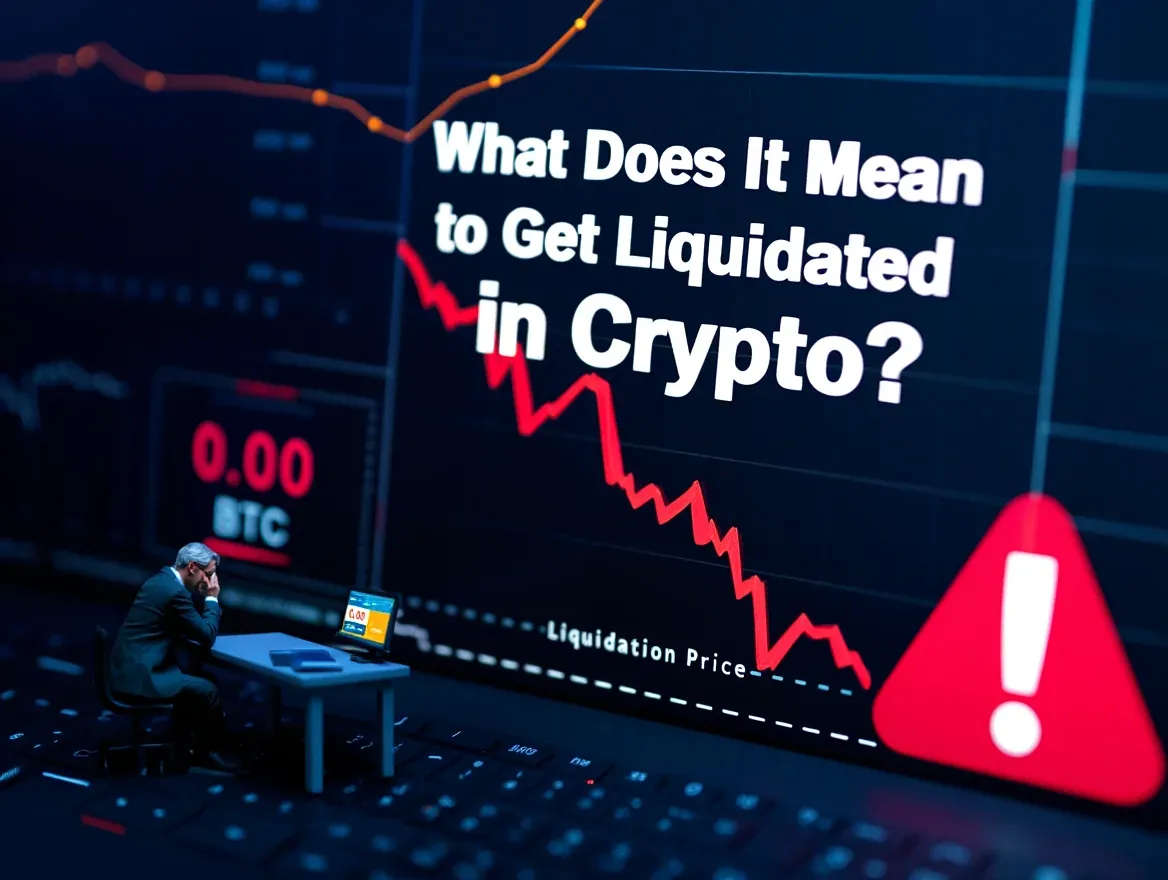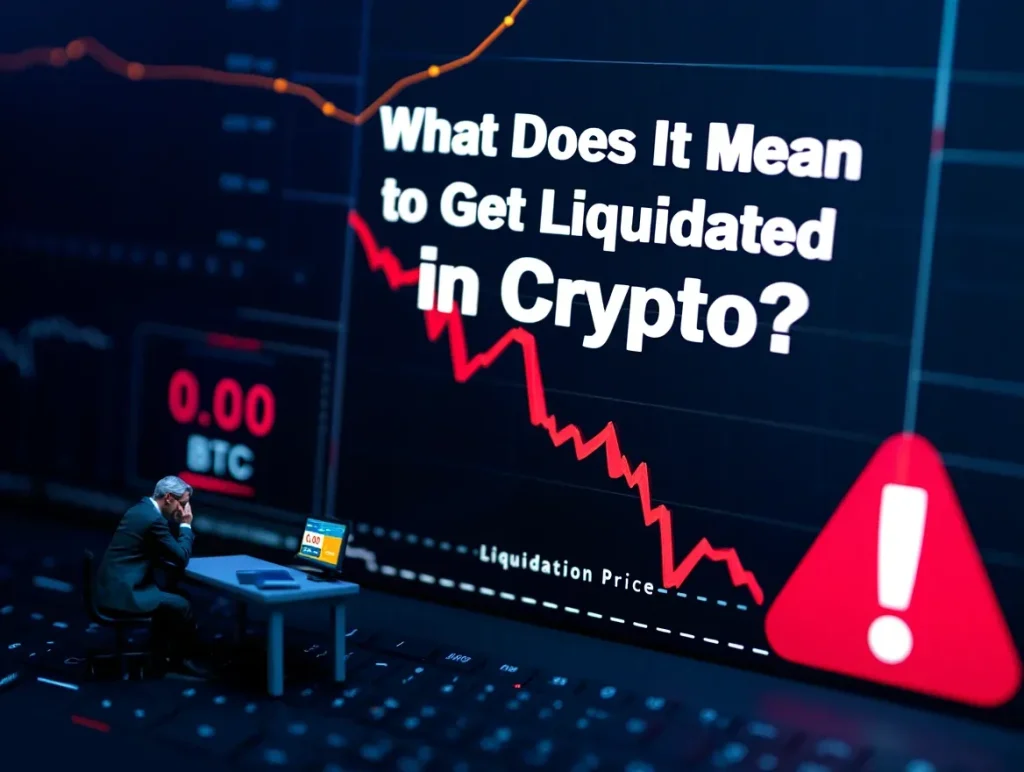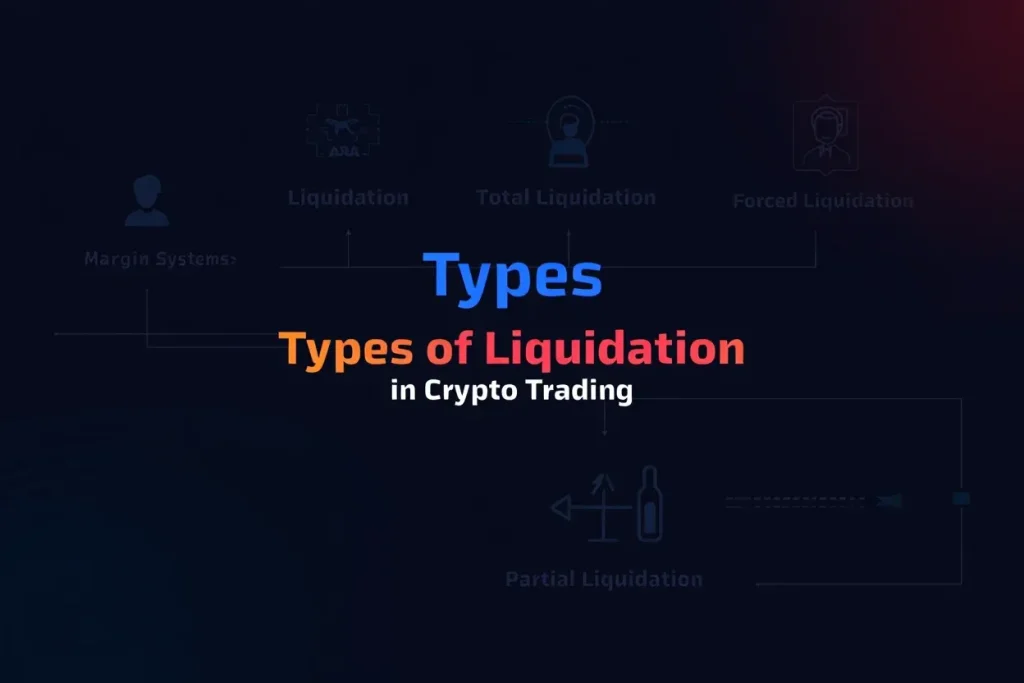Physical Address
304 North Cardinal St.
Dorchester Center, MA 02124
Physical Address
304 North Cardinal St.
Dorchester Center, MA 02124

Liquidation is one of the most critical yet misunderstood concepts in the world of crypto trading. In simple terms, liquidation occurs when a trading platform forcefully closes your leveraged position because your account’s collateral can no longer cover your trading losses. With the explosive growth of derivatives, margin, and futures trading on platforms like Binance, Bybit, and decentralized finance (DeFi) protocols, understanding this process has never been more important, especially for both new and experienced traders.
Over $8 billion in positions were liquidated during the May 2021 cryptocurrency crash, and the collapse of FTX in November 2022 wiped out thousands of accounts overnight. These events show how quickly market shifts can impact leveraged traders, sometimes causing total loss of collateral. Whether you’re trading Bitcoin, Ethereum, or newer assets on Ethereum layer 2 solutions, it’s vital to grasp what liquidation means, why it happens, and how you can protect yourself.
Liquidation in crypto trading means your leveraged position is automatically closed by the exchange or protocol because the value of your collateral is no longer enough to cover your potential losses. This applies specifically to margin and futures trading not to “spot” trading, where you simply buy or sell crypto with no borrowed funds or leverage involved.

How it usually happens:
For example, suppose you go long (betting on the price going up) on Bitcoin using 10x leverage. If the market price drops sharply, the value of your collateral may fall below the “maintenance margin.” At this point, the exchange will liquidate your position locking in your losses and seizing your collateral to cover them.
This core concept is central to risk management in crypto trading and sets the stage for all the strategies, types, and tips detailed in this guide.
Imagine a chart: Your liquidation trigger point is marked clearly below your entry price the closer the price gets to this level, the higher your risk. Understanding each step helps you anticipate danger and deploy protective strategies before liquidation strikes.

Not all liquidation events are the same. Here’s a breakdown of the main types:
For example, during sudden volatility, a trader using cross margin might see several positions liquidated at once, whereas isolated margin limits the damage to a single trade. Knowing how your exchange manages these systems is crucial for risk management.
See more related articles:
Liquidations in crypto trading are primarily a result of market volatility and the way leverage amplifies both gains and losses. The main technical reason is your account equity falling below the maintenance margin requirement set by the platform. But there are several practical triggers behind most liquidation events:
According to Binance’s 2022 risk report, over 70% of forced liquidations occurred in events where leverage exceeded 10x, and over 60% involved traders who failed to set stop-losses. Effective risk management and platform awareness are your best defenses against sudden liquidation events.

Centralized Exchanges (CEX) vs. Decentralized Protocols (DeFi)
| Feature | Centralized Exchanges (CEX) | Decentralized Protocols (DeFi) |
|---|---|---|
| Liquidation Trigger | Auto (via in-house system) | Automated via smart contract |
| User Notifications | Email/app alerts | Events on-chain, sometimes via app |
| Liquidation Executed By | Platform engine or internal traders | External bots/liquidators |
| Collateral Handling | Insurance fund (Binance, OKX), possible auto-deleveraging | Distributed to liquidator, protocol insurance sometimes (e.g., Aave safety module) |
| Example Policies | Binance: Partial then total; Coinbase: Full at trigger | Aave: Seizable %; Compound: Auction; Maker: Collateral auction |
For example, if your leveraged ETH trade on Binance is close to liquidation, you’ll receive app notifications and margin calls. If you are on Aave (a DeFi lending protocol), liquidation is executed by external bots once your health factor drops below 1.0, and the seized collateral goes to the bot, incentivized by a bonus known as the “liquidation penalty.”
The main differences include notification systems, the role of automation, execution methods, and how and where collateral is distributed after liquidation. Centralized exchanges may use insurance funds to cover insolvencies or unexpected losses, while DeFi protocols leave safeguarding to code, protocols, and community-funded insurance.
Market history is full of dramatic crypto liquidation waves that teach valuable lessons about risk, leverage, and platform robustness. In May 2021, a sudden sell-off caused more than $8 billion in liquidations across Bitcoin, Ethereum, and altcoins within 24 hours. Trading desks saw cascading margin calls as leveraged long positions hit their liquidation price, resulting in panic, forced selling, and further downward pressure.
The FTX collapse in November 2022 marked another pivotal moment. As the exchange faltered, margin traders lost access to their funds, massive positions were forcibly liquidated, and billions were wiped out across interconnected DeFi loans, exposing both centralization risks and the need for clear liquidation protocols.
In 2023–2025, volatility events like the “Ethereum layer 2 rotation” and sudden stablecoin depeggings led to rapid, chain-reaction liquidations on both CEXs and DeFi venues. In one recent case, over $500 million in Aave and Compound protocol liquidations were recorded within a single day due to a sudden drop in collateral asset value.
Studying these real-world incidents underlines just how vital it is to understand and actively manage liquidation risk before markets move against you.
Related reads to deepen your knowledge:
Knowing exactly where your position might be liquidated allows you to manage risk with confidence. The core formula is:
However, real calculations add exchange-specific variables like maintenance margin percentages and fees. Here’s how it works for common position types:

Worked examples:
| Leverage (x) | Liquidation Price Buffer (%) |
|---|---|
| 2x | 50% |
| 5x | 20% |
| 10x | 10% |
| 20x | 5% |
Always check your platform’s specific margin rules and factor in liquidation fees. The tighter the buffer, the higher your risk.
For instance, a trader used a stop-limit order to sell ETH at 5% below entry, successfully exiting before a flash crash triggered mass liquidations. Being vigilant and systematic minimizes your chances of becoming another statistic during the next market wobble.
Once a position is liquidated, your exchange will use your posted collateral to offset your outstanding losses. Anything remaining after deducting losses and fees is returned to your account, but it’s often only a fraction of your initial stake. The emotional toll can be severe leading to “revenge trading” or hasty decisions if not kept in check.
One user reportedly lost half his portfolio in a DeFi liquidation, only to rebuild successfully by scaling back leverage and focusing on lower-volatility trading pairs. Treat liquidation as a costly lesson not a permanent defeat.
Trading crypto safely in 2025 and beyond requires active learning and a healthy respect for risk. Beyond understanding liquidation, explore strategies like portfolio diversification, automation tools for monitoring margins, and strong security practices, especially in DeFi. If you want to dive deeper, check out our guides on crypto risk management, advanced leverage strategies, and how to secure your funds in decentralized finance. Knowledge is your best tool against unexpected losses invest in it before you invest in the market.
Liquidation is a fundamental risk for anyone trading crypto with leverage. By understanding what liquidation means, how it’s triggered, and how to calculate your personal risk exposure, you put yourself ahead of most market participants. Combine best-practice risk management with real-time monitoring, and learn from historic liquidation events to safeguard your capital. Armed with the insights in this guide, you’re better prepared to navigate the crypto volatility of 2025 and make informed, resilient trading decisions.
At Webtaichinh, our mission is to provide you with clear, unbiased insights into the world of cryptocurrency through the Cryptocurrency category, helping you navigate complex topics with confidence, without hype or hidden agendas.
Webtaichinh delivers real-time financial updates, ensuring you stay informed about market trends, policies, and global economic developments. As part of our commitment to excellence, we provide accurate information and in-depth analysis, empowering investors to make swift, confident decisions in a dynamic financial world.
For inquiries or personalized assistance, feel free to contact us:
📞 Phone: 055 937 9204
📧 Email: webtaichinh@gmail.com
💻 Website: https://webtaichinh.vn/
📍 Address: 13 Ho Tung Mau, An Binh, Di An, Binh Duong
At webtaichinh, your financial success is our mission.